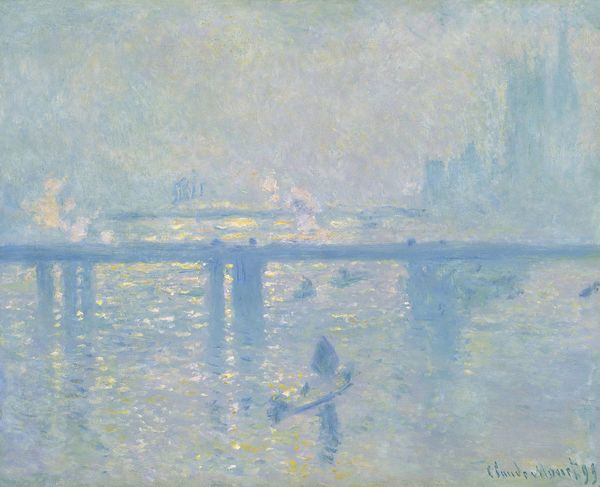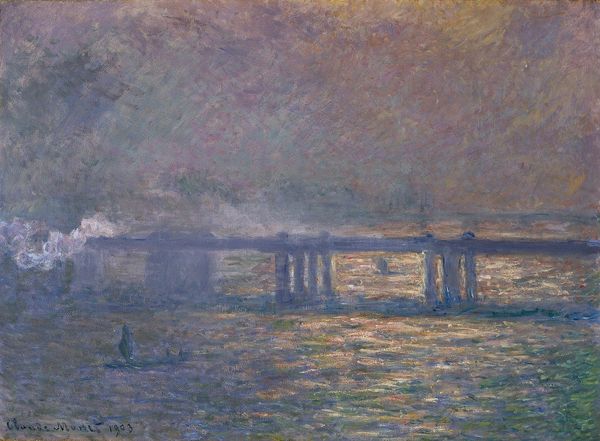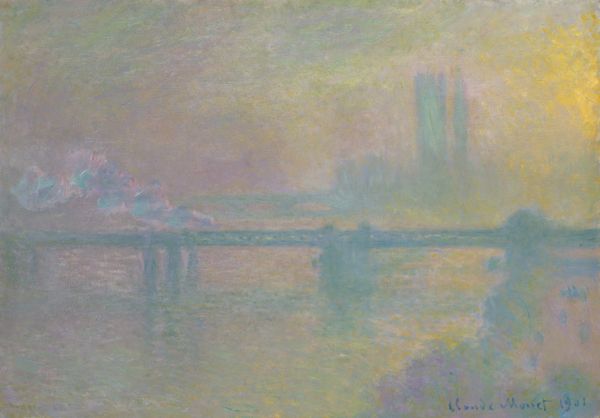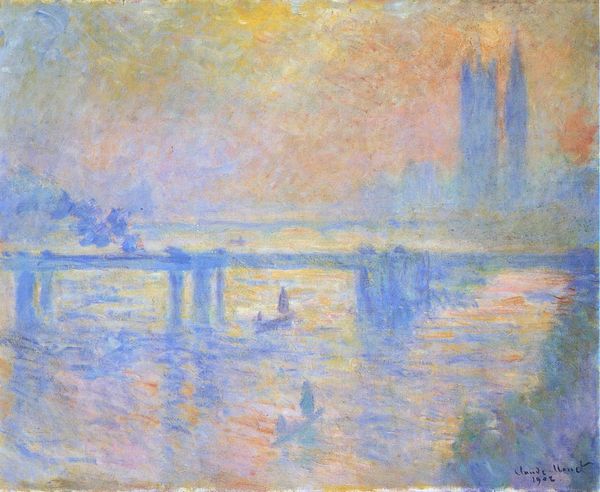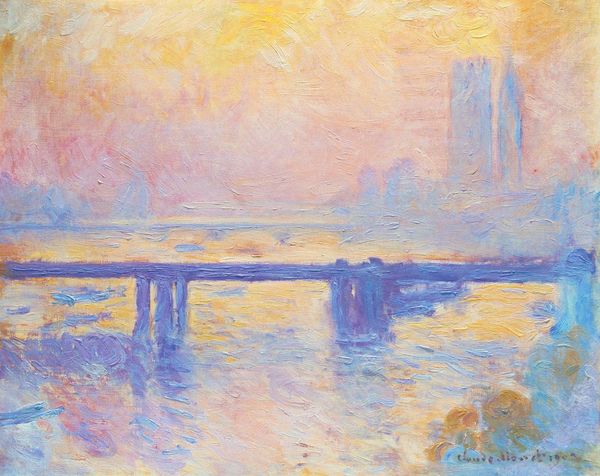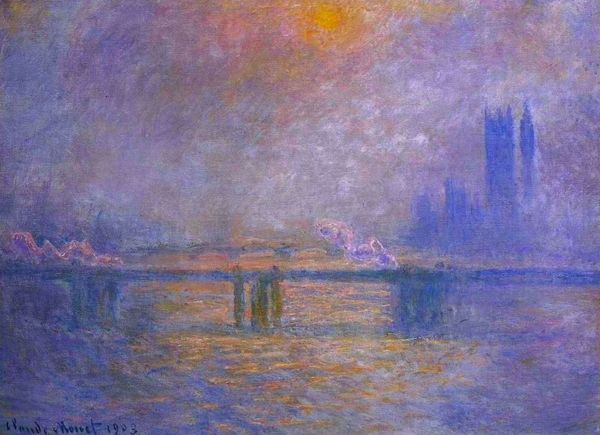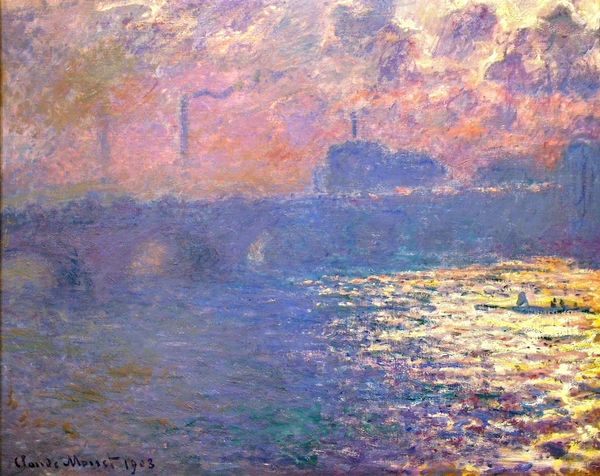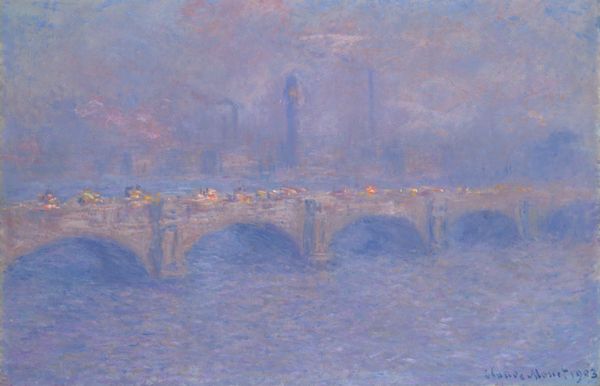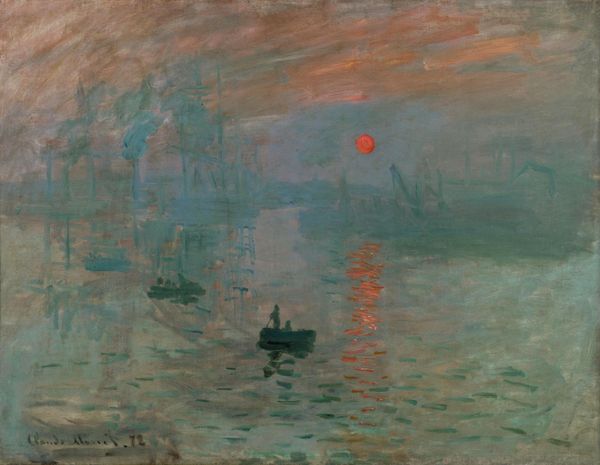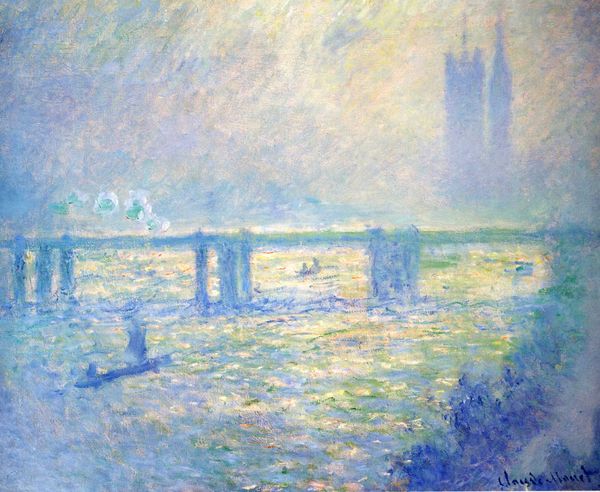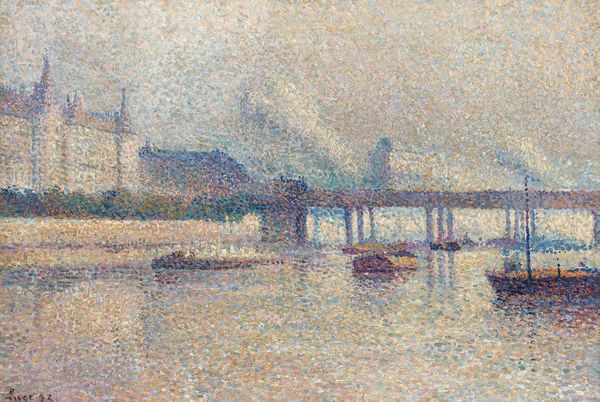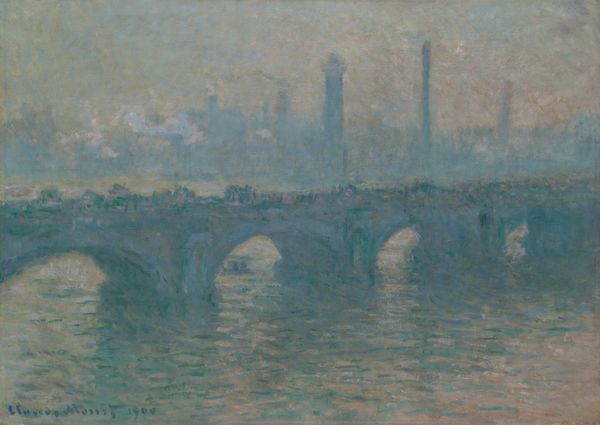
Copyright: Public domain
Curator: There's such a pervasive melancholic feeling about this scene... it’s almost as if the city is holding its breath. Editor: Indeed. We are looking at Claude Monet's "Charing Cross Bridge, The Thames", an oil on canvas painted in 1903 during one of his extended stays in London. He was captivated by the city's fog. Curator: You can feel that fog! The bridge seems to dissolve into it. The sun struggles to burn through this canvas and become fully seen. It's symbolic of perseverance. Editor: The industrial smog of London was, of course, not merely aesthetic. Its density choked the city; poor air quality shaped its socio-economic structure and its political life as well. Monet painted several versions of this bridge. Curator: That’s interesting that he made more than one—almost like an iterative symbol or image. I would argue he was painting an emotional landscape—not just what was there. Look at how he renders the light. It's not representational. It's atmospheric and moody, creating a specific experience in the viewer. Editor: Absolutely, the Houses of Parliament, those vague shapes in the distance, become ghostlike—almost a warning that great institutions, like anything else, might just dissolve. He focuses less on documenting a structure and more on capturing a sense of transience, which could signal some deeper societal anxieties around turn of the century urban existence. Curator: Perhaps… the muted colors, the haziness, it all speaks to the ephemeral nature of perception itself, of human presence—we leave an imprint, but time, like the Thames, flows onward. Even that light will fade. Editor: And the brushstrokes themselves mirror that transience. Quick, broken touches—as though afraid of holding still for too long. Curator: Knowing that helps shift my interpretation. Editor: Exactly. It enriches our understanding of how that image, that symbol, resonated at a very specific moment, within complex systems. Curator: Yes, thank you. That contextual grounding truly changes the tone for me from merely moody to politically relevant and emotionally deep.
Comments
No comments
Be the first to comment and join the conversation on the ultimate creative platform.
